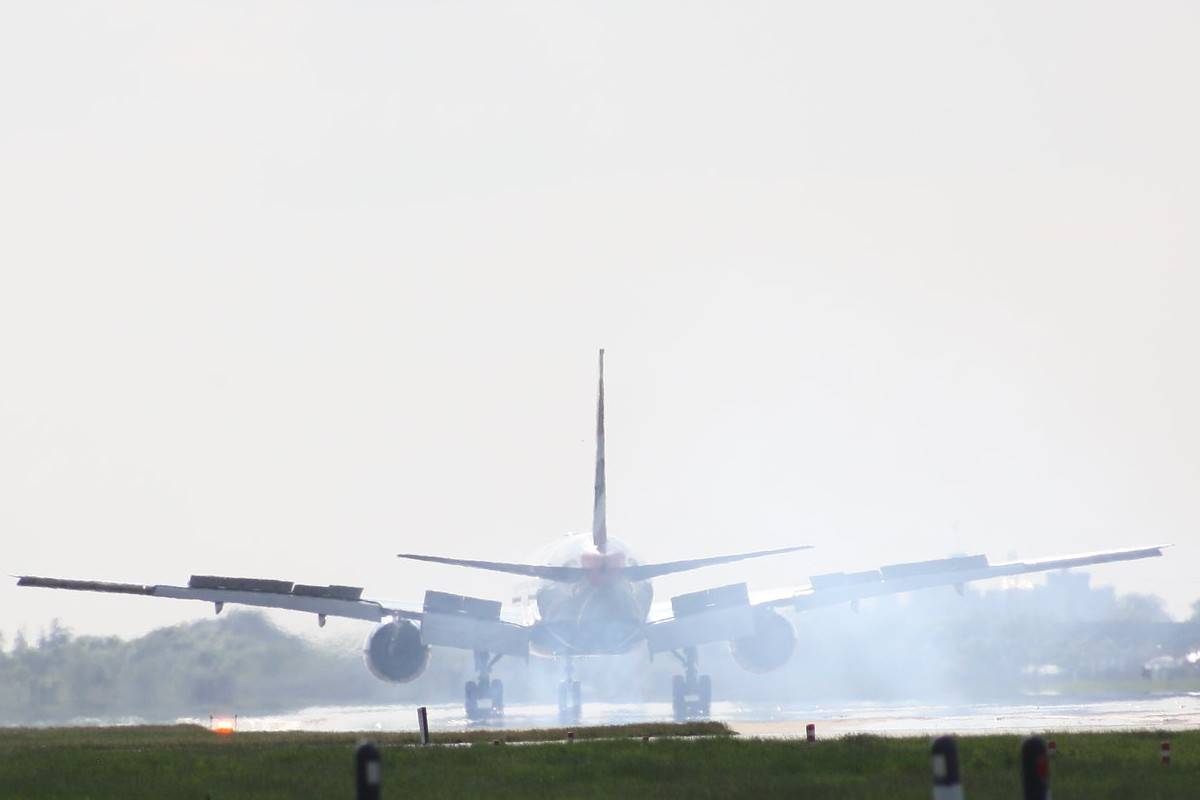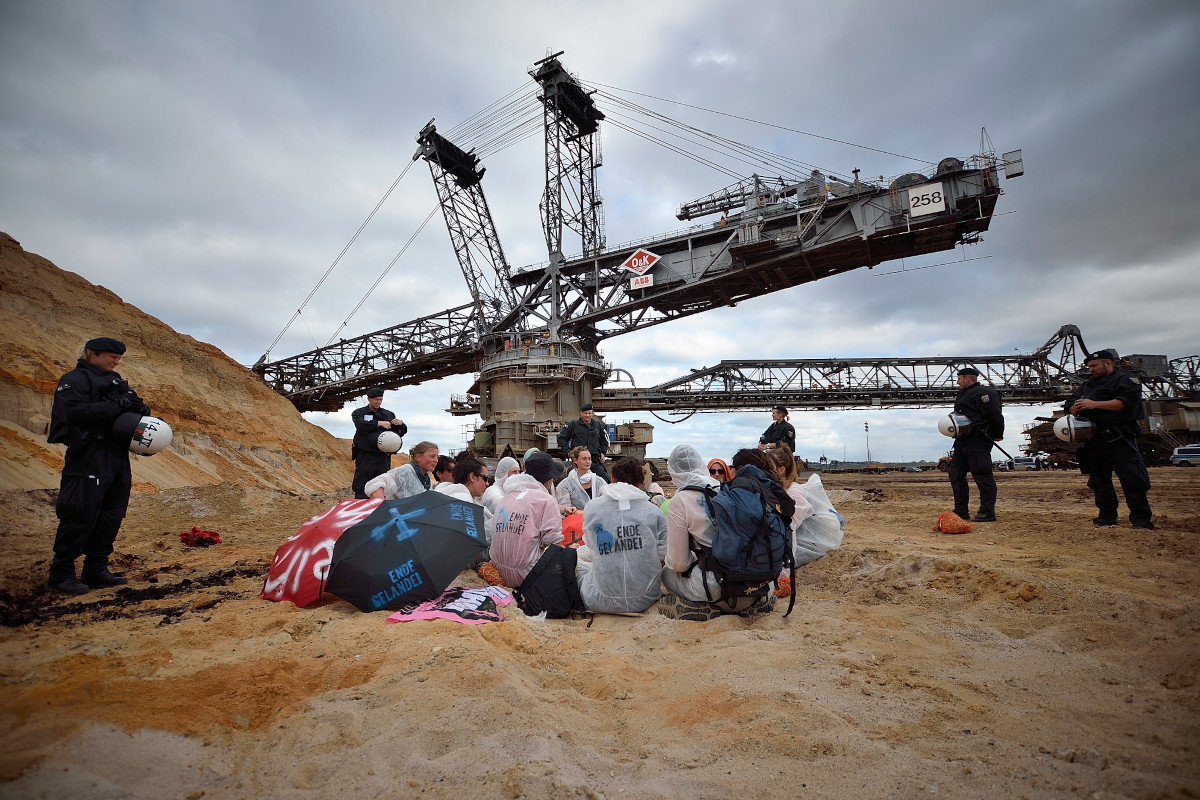Border security with drones and databases
Topic
Country/Region
27 February 2024
The EU’s borders are increasingly militarised, with hundreds of millions of euros paid to state agencies and military, security and IT companies for surveillance, patrols and apprehension and detention. This process has massive human cost, and politicians are planning to intensify it.
Support our work: become a Friend of Statewatch from as little as £1/€1 per month.
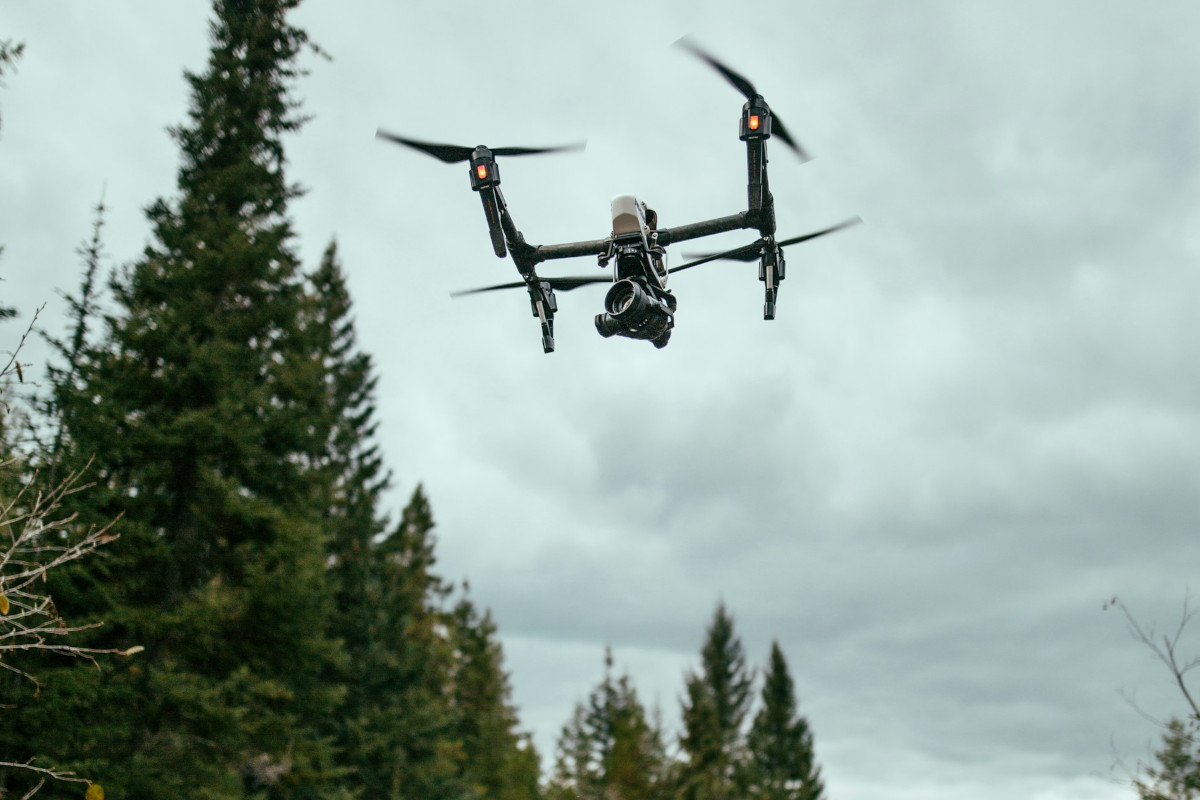
Image: Sam McGhee, Unsplash
This article was originally published by Welt Sichten, and is based upon the Statewatch/EuroMed Rights report Europe's techno-borders.
Europe is ringed by steel fences topped by barbed wire; patrolled by border agents equipped with thermal vision systems, heartbeat detectors, guns and batons; and watched from the skies by drones, helicopters and planes. Anyone who enters is supposed to have their fingerprints and photograph taken for inclusion in an enormous biometric database. Constant additions to this technological arsenal are under development, backed by generous amounts of public funding. Three decades after the fall of the Berlin Wall, there are more walls than ever at Europe’s borders,[1] and those borders stretch ever further in and out of its territory. This situation is the result of long-term political and corporate efforts to toughen up border surveillance and controls.
The implications for those travelling to the EU depend on whether they belong to the majority entering in a “regular” manner, with the necessary paperwork and permissions, or are unable to obtain that paperwork, and cross borders irregularly. Those with permission must hand over increasing amounts of personal data. The increasing automation of borders is reliant on the collection of sensitive personal data and the use of algorithms, machine learning and other forms of so-called artificial intelligence to determine whether or not an individual poses a threat.
Those without permission to enter the EU – a category that includes almost any refugee, with the notable exception of those who hold a Ukrainian passport – are faced with technology, personnel and policies designed to make journeys increasingly difficult, and thus increasingly dangerous. The reliance on smugglers is a result of the insistence on keeping people in need out at any cost – and the cost is substantial. Thousands of people die at Europe’s borders every year, families are separated, and people suffer serious physical and psychological harm as a result of those journeys and subsequent administrative detention and social marginalisation. Yet parties of all political stripes remain committed to the same harmful and dangerous policies – many of which are being worsened through the new Pact on Migration and Asylum.[2]
The EU’s border agency, Frontex, based in Warsaw, was first set up in 2004 with the aim of providing technical coordination between EU member states’ border guards. Its remit has been gradually expanded. Following the “migration crisis” of 2015 and 2016, extensive new powers were granted to the agency. As the Max Planck Institute has noted, the 2016 law shifted the agency from a playing “support role” to acting as “a player in its own right that fulfils a regulatory, supervisory, and operational role.”[3] New tasks granted to the agency included coordinating deportations of rejected refugees and migrants, data analysis and exchange, border surveillance, and technology research and development. A further legal upgrade in 2019 introduced even more extensive powers, in particular in relation to deportations, and cooperation with and operations in third countries.
The uniforms, guns and batons wielded by Frontex’s border guards are self-evidently militaristic in nature, as are other aspects of its work: surveillance drones have been acquired from Israeli military companies, and the agency deploys “mobile radars and thermal cameras mounted on vehicles, as well as heartbeat detectors and CO2 monitors used to detect signs of people concealed inside vehicles.”[4] One investigation described the companies that have held lobbying meetings or attended events with Frontex as “a Who’s Who of the weapons industry,” with guests including Airbus, BAE Systems, Leonardo and Thales.[5] The information acquired from the agency’s surveillance and field operations is combined with data provided by EU and third country agencies, and fed into the European Border Surveillance System, EUROSUR. This offers a God’s-eye overview of the situation at Europe’s borders and beyond – the system also claims to provide “pre-frontier situational awareness.”
The EU and its member states also fund research and development on these technologies. From 2014 to 2022, 49 research projects were provided with a total of almost €275 million to investigate new border technologies, including swarms of autonomous drones for border surveillance, and systems that aim to use artificial intelligence to integrate and analyse data from drones, satellites, cameras, sensors and elsewhere for “analysis of potential threats” and “detection of illegal activities.”[6] Amongst the top recipients of funding have been large research institutes – for example, Germany’s Fraunhofer Institute – but companies such as Leonardo, Smiths Detection, Engineering – Ingegneria Informatica and Veridos have also been significant beneficiaries.[7]
This is only a tiny fraction of the funds available for strengthening the EU’s border regime. A 2022 study found that between 2015 and 2020, €7.7 billion had been spent on the EU’s borders and “the biggest parts of this budget come from European funding” – that is, the EU’s own budget. The total value of the budgets that provide funds for asylum, migration and border control between 2021-27 comes to over €113 billion[8]. Proposals for the next round of budgets from 2028 until 2035 are likely to be even larger.
Cooperation between the EU, its member states and third countries on migration control comes in a variety of forms: diplomacy, short and long-term projects, formal agreements and operational deployments. Whatever form it takes, it is frequently extremely harmful. For example, to try to reduce the number of people arriving across the Mediterranean, member states have withdrawn national sea rescue assets (as deployed, for example, in Italy’s Mare Nostrum operation) whilst increasing aerial surveillance, such as that provided by the Israel-produced drones operated by Frontex. This makes it possible to observe refugees attempting to cross the Mediterranean, whilst outsourcing their interception to authorities from countries such as Libya, Tunisia and Egypt.
This is part of an ongoing plan “to strengthen coordination of search and rescue capacities and border surveillance at sea and land borders” of those countries. [9] Cooperation with Tunisia includes refitting search and rescue vessels and providing vehicles and equipment to the Tunisian coastguard and navy, along with substantial amounts of funding. The agreement with Egypt appears to be structured along similar lines, and five vessels have been provided to the so-called Libyan Coast Guard in 2023.[10]
Frontex also plays a key role in the EU’s externalised border controls. The 2016 reform allowed Frontex deployments at countries bordering the EU, and the 2019 reform allowed deployments anywhere in the world, subject to agreement with the state in question. There are now EU border guards stationed in Albania, Montenegro, Serbia, Bosnia and Herzegovina, and North Macedonia.[11] The agency is seeking agreements with Niger, Senegal and Morocco, and has recently received visits from Tunisian and Egyptian officials with a view to stepping up cooperation.[12]
In a recent report for the organisation EuroMed Rights, Antonella Napolitano highlighted “a new element” in the EU’s externalisation strategy: “the use of EU funds – including development aid – to outsource surveillance technologies that are used to entrench political control both on people on the move and local population.” Five means of doing so have been identified: provision of equipment; training; financing operations and procurement; facilitating exports by industry; and promoting legislation that enables surveillance.[13]
The report highlights Frontex’s extended role which, even without agreements allowing deployments on foreign territory, has seen the agency support the creation of “risk analysis cells” in a number of African states, used to gather and analyse data on migration movements. The EU has also funded intelligence training in Algeria, digital evidence capacity building in Egypt, border control initiatives in Libya, and the provision of surveillance technology to Morocco. The European Ombudsman has found that insufficient attention has been given to the potential human rights impacts of this kind of cooperation.[14]
While the EU and its member states may provide the funds for the acquisition of new technologies, or the construction of new border control systems, information on the companies that receive the contracts is not necessarily publicly available. Funds awarded to third countries will be spent in accordance with those countries’ procurement rules, which may not be as transparent as those in the EU. Indeed, the acquisition of information on the externalisation in third countries is far from simple, as a Statewatch investigation published in March 2023 found.[15]
While EU and member state institutions are clearly committed to continuing with plans to strengthen border controls, there is a plethora of organisations, initiatives, campaigns and projects in Europe, Africa and elsewhere that are calling for a different approach. One major opportunity to call for change in the years to come will revolve around proposals for the EU’s new budgets in the 2028-35 period. The European Commission is likely to propose pouring billions more euros into borders – but there are many alternative uses of that money that would be more positive and productive. The challenge will be in creating enough political pressure to make that happen.
This article was originally published by Welt Sichten, and is based upon the Statewatch/EuroMed Rights report Europe's techno-borders.
Notes
[1] https://www.tni.org/en/publication/building-walls
[2] https://www.statewatch.org/news/2023/december/tracking-the-pact-human-rights-disaster-in-the-works-as-parliament-makes-significant-concessions-to-council/
[3] https://www.mpg.de/14588889/frontex
[4] https://www.theguardian.com/global-development/2021/dec/06/fortress-europe-the-millions-spent-on-military-grade-tech-to-deter-refugees
[5] https://frontexfiles.eu/en.html
[6] https://www.statewatch.org/publications/reports-and-books/europe-s-techno-borders/
[7] https://www.statewatch.org/publications/reports-and-books/europe-s-techno-borders/
[8] https://www.statewatch.org/publications/reports-and-books/europe-s-techno-borders/
[9] https://www.statewatch.org/news/2023/november/eu-planning-new-anti-migration-deals-with-egypt-and-tunisia-unrepentant-in-support-for-libya/
[10] https://www.statewatch.org/media/4103/eu-com-von-der-leyen-ec-letter-annex-10-23.pdf
[11] https://www.statewatch.org/analyses/2021/briefing-external-action-frontex-operations-outside-the-eu/
[12] https://www.statewatch.org/news/2023/november/eu-planning-new-anti-migration-deals-with-egypt-and-tunisia-unrepentant-in-support-for-libya/, https://www.statewatch.org/publications/events/secrecy-and-the-externalisation-of-eu-migration-control/
[13] https://privacyinternational.org/challenging-drivers-surveillance
[14] https://euromedrights.org/wp-content/uploads/2023/07/Euromed_AI-Migration-Report_EN-1.pdf
[15] https://www.statewatch.org/access-denied-secrecy-and-the-externalisation-of-eu-migration-control/
Our work is only possible with your support.
Become a Friend of Statewatch from as little as £1/€1 per month.
Further reading
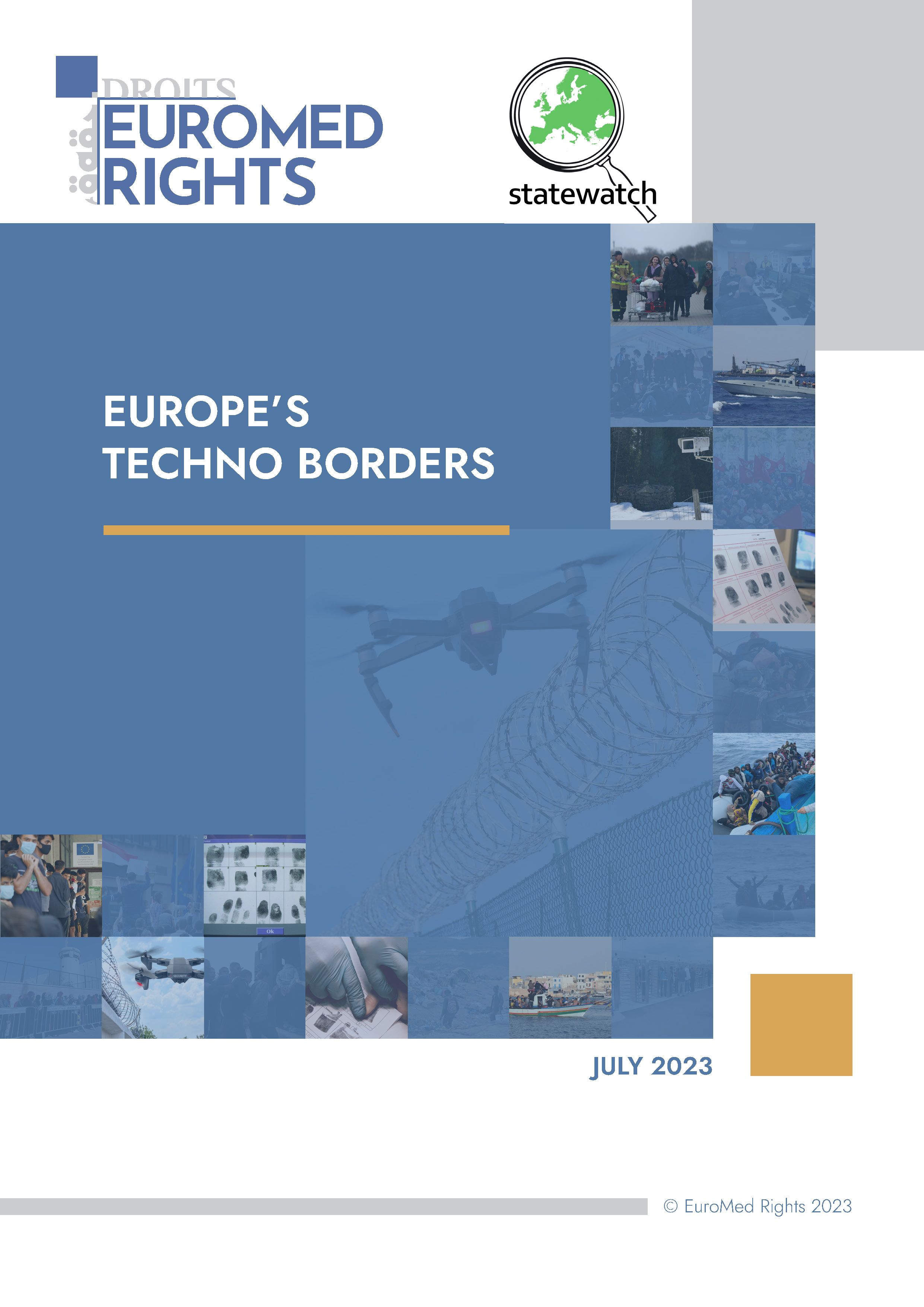
Europe's techno-borders
The digital technologies deployed as part of Europe’s techno-borders underpin invasions of privacy, brutal violations of human rights, and make the border ‘mobile’, for example through the increased use of biometric identification technologies, such as handheld fingerprint scanners. This report analyses the past, present and future of Europe’s “techno-borders,” the infrastructure put in place over the last three decades to provide authorities with knowledge of – and thus control over – foreign nationals seeking to enter or staying in EU and Schengen territory.
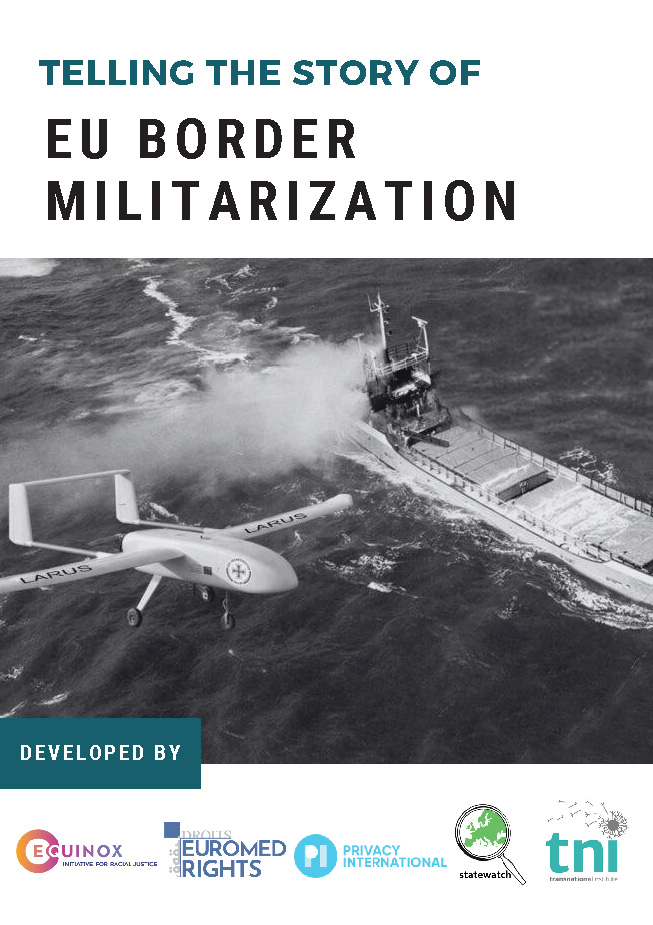
Telling the story of EU border militarization
Addressing and preventing European border violence is a huge but necessary strategic challenge. This guide offers framing messages, guiding principles, and suggested language for people and organisations working on this challenge. It emerges from a process of discussion online and in-person between over a dozen organisations working in the European migrant justice space.
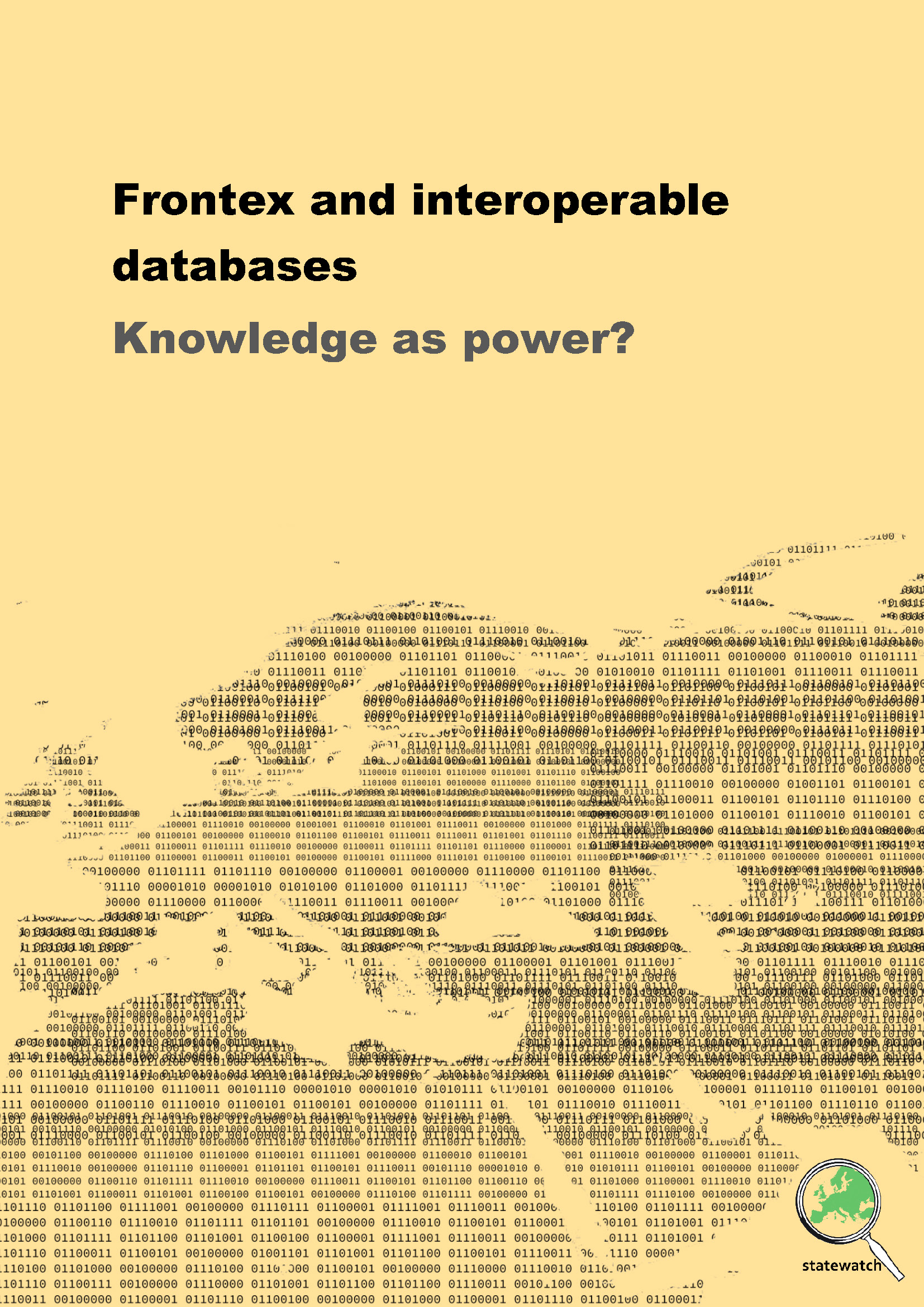
Frontex and interoperable databases: knowledge as power?
The EU’s border agency, Frontex, will be able to access vast quantities of data once the EU’s ‘interoperable’ policing and migration databases are fully operational. This briefing considers the agency’s use of data from two different perspectives – operational and statistical – and provides an overview of the agency’s role in the EU’s emerging “travel intelligence” architecture. It is aimed at informing understanding, analysis and critique of the agency and its role, with a view to making it possible to better understand, engage with and challenge future developments in this area.
Previous article
Frontex and deportations, 2006-22
Next article
Environmental activism under the EU counter-terror microscope
Spotted an error? If you've spotted a problem with this page, just click once to let us know.
